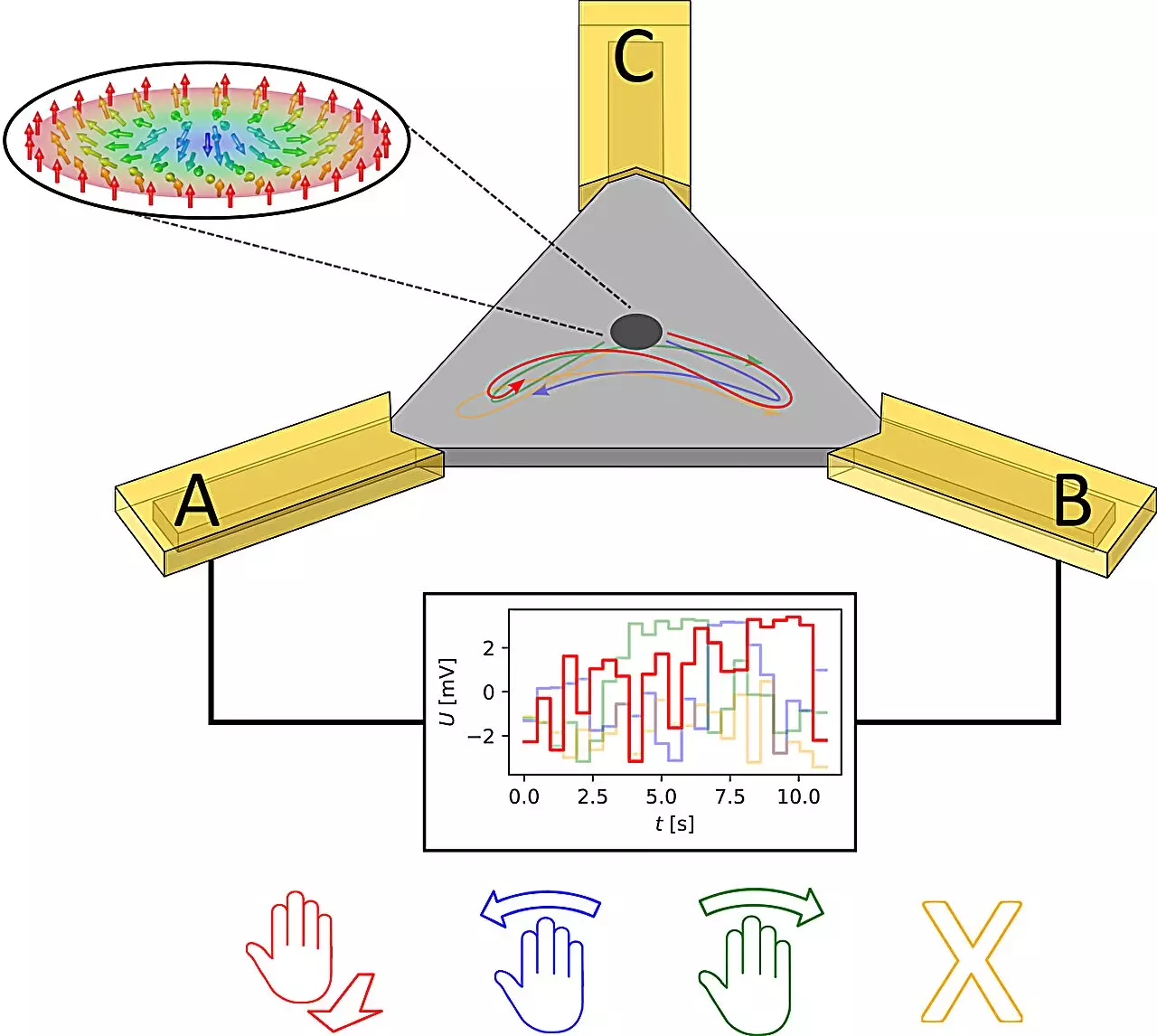In recent years, researchers have sought innovative ways to enhance gesture recognition technologies, leading to fascinating developments in computation and data interpretation. One such advancement comes from the Johannes Gutenberg University Mainz (JGU), where an exciting new framework has emerged: Brownian reservoir computing. This cutting-edge technology employs skyrmions, which are chiral magnetic structures, to capture and identify hand gestures like swipes and taps with exceptional accuracy. This article dives into how reservoir computing represents a breakthrough in energy-efficient gesture recognition technology and its potential implications for future applications.
Grischa Beneke, an integral member of Professor Mathias Kläui’s research group at JGU, has been instrumental in demonstrating that Brownian reservoir computing can effectively recognize hand gestures. Unlike traditional neural networks, which require substantial training and consume significant energy, this novel approach sidesteps these limitations. Beneke describes the essence of their methodology as akin to reading the complex wave patterns created when stones are thrown into a pond. Just as these ripples reveal the number and placement of stones, the output mechanism of a reservoir computing system can decode the information fed into it from simple hand gestures.
The research highlights a pivotal transition from energy-intensive, software-based solutions to a more sustainable hardware approach. In this pioneering study, Beneke and his colleagues utilized Range-Doppler radar technology, equipped with two Infineon Technologies radar sensors, to accurately record hand movements. This data is then transformed into voltages, which are introduced into a multilayered thin film reservoir—a unique triangular formation composed of various materials. This setup is crucial because it harnesses the natural dynamics of skyrmions to track and interpret complex motions with remarkable precision.
Why Skyrmions Matter
Skyrmions, originally viewed primarily as promising candidates for data storage solutions, have now begun to reveal their exceptional capabilities as active components in computing systems. Their unique properties allow for random movements within a magnetic field, offering a significant edge over traditional computational elements that require higher energy inputs. Professor Kläui notes the dual potential of skyrmions: not only can they serve as information carriers, but their properties can also be harnessed in responsive sensor networks, paving the way for hybrid systems that intelligently integrate data processing and recognition functionalities.
Beneke’s research illustrates that when comparing the effectiveness of Brownian reservoir computing against state-of-the-art software models, the former often matches or even surpasses the accuracy in gesture recognition tasks. This is indicative of skyrmions’ ability to transmit data effectively while operating under remarkably low current conditions—a key advantage when considering the growing demand for energy efficiency in technology.
By synthesizing the properties of skyrmions with the innate abilities of reservoir computing, researchers have leveraged their energies to resolve problems more adeptly than previous models. A notable feature of their study is how closely the time scales of the radar data collection and reservoir dynamics align. This temporal synchronicity allows for seamless data input, dynamically optimizing the system’s performance without excessive overhead. As the radar records various gesture data, the reservoir’s intelligent design processes the information in real-time, ensuring high fidelity in recognition.
Despite the promising results, the researchers are acutely aware of the need for continual improvement. Currently relying on a magneto-optical Kerr-effect (MOKE) microscope for read-out processes, Beneke suggests that transitioning to a magnetic tunnel junction could create a more compact system while retaining functionality. This adaptation signifies the relentless pursuit of refinement in motion recognition technologies and hints at a future where devices respond intuitively to user inputs with unprecedented speed and efficiency.
As the convergence of advanced computational techniques and innovative materials like skyrmions unfolds, the implications for gesture recognition technologies are phenomenal. Brownian reservoir computing represents not just a leap forward in energy efficiency but a paradigm shift towards intuitive human-computer interactions. The successful demonstration of this system at JGU is not merely a technical achievement; it heralds a future where our gestures can seamlessly control devices, significantly enhancing user experiences across various sectors.
This research underscores the importance of interdisciplinary collaboration in driving technological advancements. The collective efforts of physicists and engineers are setting the stage for the next generation of computational systems that are more responsive, energy-efficient, and perfectly attuned to human needs. As exploration in this domain continues, the horizon appears bright for integrating sophisticated computational frameworks into everyday technology, hinting at an era where machines and users communicate as naturally as human gesture itself.


Leave a Reply